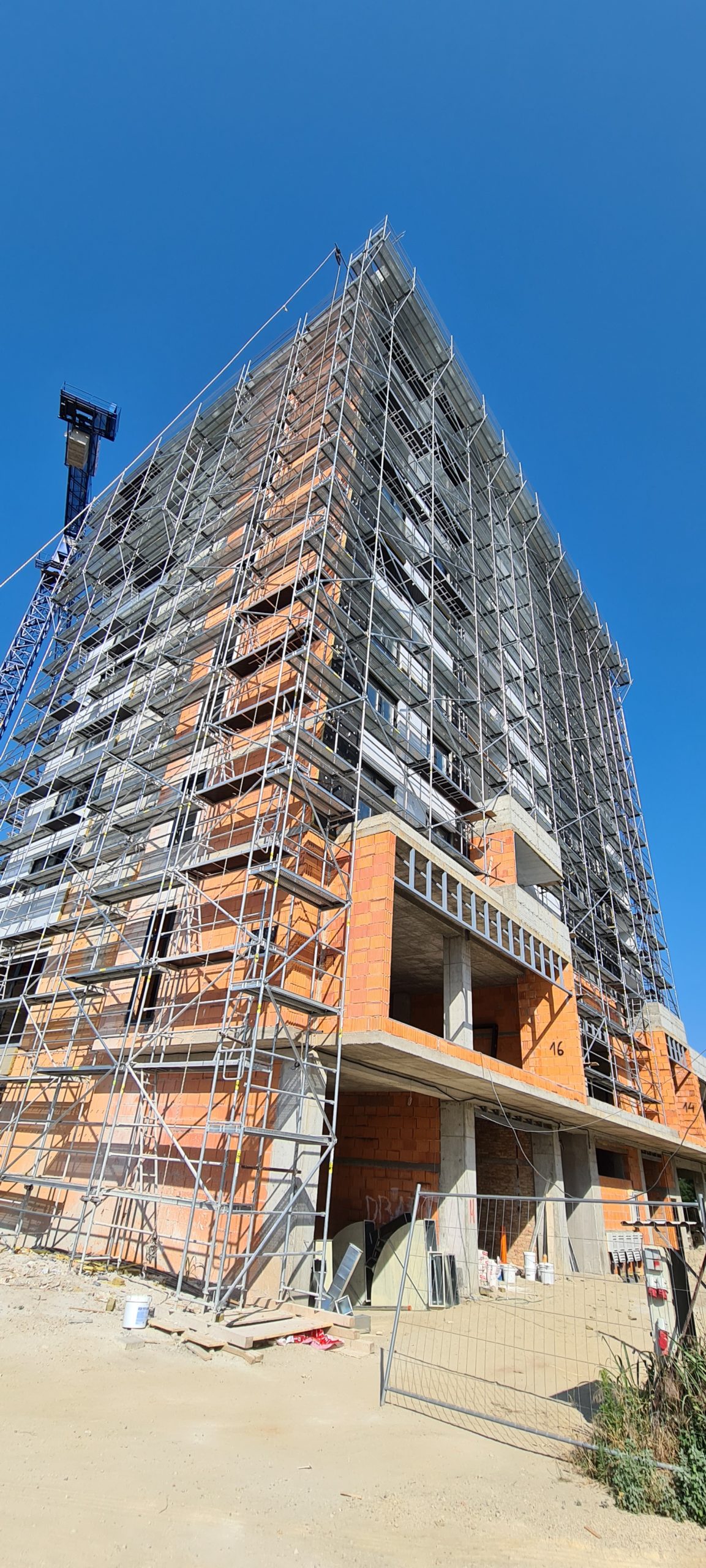It is associated with a high risk of accidents and thus injuries, which forces the organizers, investors and people responsible for the project to increase safety rules. Thus, it is necessary to ensure the solidity of the structure, as well as the security systems and protection of health and life of people working on the scaffolding and in the immediate vicinity. The scaffolding requires a foundation, and therefore stabilization in the ground.
Basic principles of the scaffolding foundation
The scaffolding must be erected on the ground showing the proper load-bearing capacity. Therefore, we always mount them on a stable, well-tested surface. It is profiled with an appropriate slope, which ensures free drainage of rainwater during heavy rains. The weight should be evenly distributed, which is possible thanks to the use of special wooden bases. Their task is to increase stability of the whole scaffold. We never use stones as a base as this increases the risk of cracking. When installing screw jacks, we always use a central position. As for the thickness of the base, it should be as large as possible. A 4.5 cm thick underlay is recommended. This ensures a better load distribution. If we want to transfer the load at an angle of 45 ° in relation to the wooden base contour, use one that is stiffer than the ground.
Inclined foundation It is not uncommon for the scaffolding foundation to be inclined. We then have to level them properly. For this purpose, several solutions are used, among them: tilting screw jacks, leveling plates or appropriately adapted wedges. The pipes are screwed to the screw base. Thanks to this, we avoid the risk of bending of the tilting screw base. Additionally, the wedge must be secured against slipping. However, if we do not use an appropriate wooden base, the vertical anchors will have an unacceptable load. As a consequence, the stability of the structure will be disturbed. You should also know that in such a situation the pressure on the ground decreases down to approx. 20% .
In some cases, pipes are also used to stiffen the feet. It happens when we have to install the unscrewing of the stands and it is relatively large. This action is to increase the load capacity.

Anchoring free-standing scaffolding
We do not always install the scaffolding next to the building and attach it to its facade. There are projects that require a free-standing scaffold. It must also be sufficiently stable in these circumstances. It is then necessary to anchor it in a substrate that has good bearing capacity. We need fasteners and anchors. The load-bearing capacity of the fasteners must be a proven anchoring force. We can do this through trial and static calculations as well as system admittance. Anchoring forces are influenced by many factors that may change them. This applies mainly to, wind force, field length, scaffolding usage time and anchorage spacing.
Work on the scaffolding must be safe, and to make it possible, the stability and solidity of the structure must be ensured. Let us not forget, that it is also influenced by the work of the team itself and compliance with the general principles of occupational health and safety.
